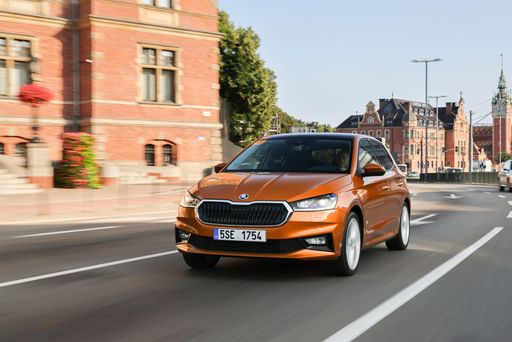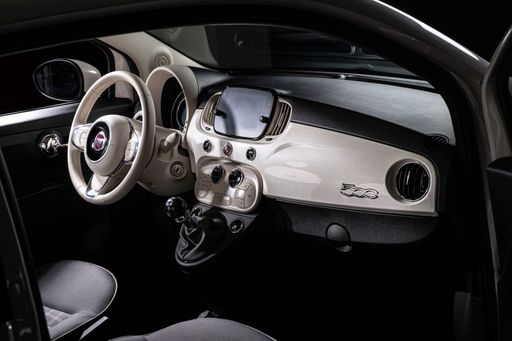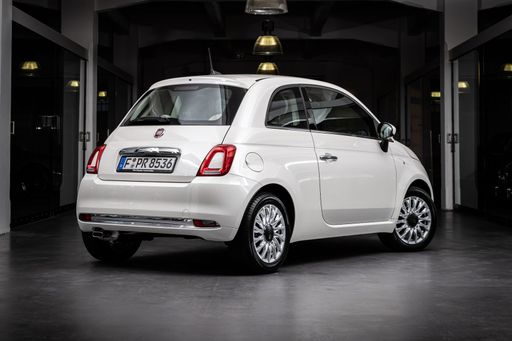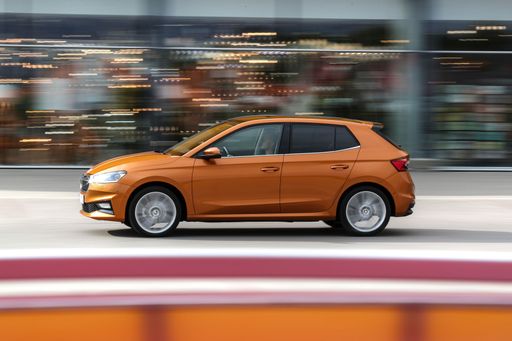Fiat 500 vs Skoda Fabia - Differences and prices compared
Compare performance (118 HP vs 177 HP), boot space and price (18800 £ vs 16900 £) at a glance. Find out which car is the better choice for you – Fiat 500 or Skoda Fabia?
Costs and Efficiency:
When it comes to price and running costs, the biggest differences usually appear. This is often where you see which car fits your budget better in the long run.
Skoda Fabia has a somewhat advantage in terms of price – it starts at 16900 £, while the Fiat 500 costs 18800 £. That’s a price difference of around 1971 £.
Fuel consumption also shows a difference: Skoda Fabia manages with 4.90 L and is therefore hardly perceptible more efficient than the Fiat 500 with 5.30 L. The difference is about 0.40 L per 100 km.
Engine and Performance:
Power, torque and acceleration are the classic benchmarks for car enthusiasts – and here, some clear differences start to show.
When it comes to engine power, the Skoda Fabia has a distinct edge – offering 177 HP compared to 118 HP. That’s roughly 59 HP more horsepower.
In acceleration from 0 to 100 km/h, the Skoda Fabia is distinct quicker – completing the sprint in 7.40 s, while the Fiat 500 takes 9 s. That’s about 1.60 s faster.
In terms of top speed, the Skoda Fabia performs evident better – reaching 228 km/h, while the Fiat 500 tops out at 155 km/h. The difference is around 73 km/h.
There’s also a difference in torque: Skoda Fabia pulls to a small extent stronger with 250 Nm compared to 220 Nm. That’s about 30 Nm difference.
Space and Everyday Use:
Cabin size, boot volume and payload all play a role in everyday practicality. Here, comfort and flexibility make the difference.
Seats: Skoda Fabia offers slightly more seating capacity – 5 vs 4.
In curb weight, Fiat 500 is slight lighter – 1141 kg compared to 1143 kg. The difference is around 2 kg.
In terms of boot space, the Skoda Fabia offers clearly more room – 380 L compared to 185 L. That’s a difference of about 195 L.
In maximum load capacity, the Skoda Fabia performs convincingly better – up to 1190 L, which is about 640 L more than the Fiat 500.
When it comes to payload, Skoda Fabia evident takes the win – 437 kg compared to 325 kg. That’s a difference of about 112 kg.
Who wins the race?
The Skoda Fabia proves to be wins the duel decisively and therefore becomes our DriveDuel Champion!
Skoda Fabia is the better all-rounder in this comparison.

Skoda Fabia
Costs and Consumption
View detailed analysis
Engine and Performance
View detailed analysis
Dimensions and Body
View detailed analysis
Fiat 500
The Fiat 500 is a cheeky, retro‑styled city car that turns heads with its iconic looks and playful personality. Perfect for weaving through tight streets and easing into tiny parking spots, it’s aimed at buyers who want style and character more than grand touring prowess.
details


Skoda Fabia
The Skoda Fabia is a clever, no-nonsense small car that turns everyday chores into a breeze thanks to smart packaging and a surprisingly roomy cabin. It won’t set your pulses racing, but it’s a consistently sensible choice — reliable, easy to live with and blessed with a few neat tricks that make city life less faff.
details





|

|
|
|
|
Costs and Consumption |
|
|---|---|
|
Price
18800 - 30800 £
|
Price
16900 - 30500 £
|
|
Consumption L/100km
5.30 L
|
Consumption L/100km
4.9 - 5.6 L
|
|
Consumption kWh/100km
13 - 14.7 kWh
|
Consumption kWh/100km
-
|
|
Electric Range
190 - 331 km
|
Electric Range
-
|
|
Battery Capacity
21.3 - 37.3 kWh
|
Battery Capacity
-
|
|
co2
0 - 120 g/km
|
co2
112 - 126 g/km
|
|
Fuel tank capacity
-
|
Fuel tank capacity
40 L
|
Dimensions and Body |
|
|---|---|
|
Body Type
Hatchback
|
Body Type
Hatchback
|
|
Seats
4
|
Seats
5
|
|
Doors
3 - 4
|
Doors
5
|
|
Curb weight
1141 - 1475 kg
|
Curb weight
1143 - 1278 kg
|
|
Trunk capacity
183 - 185 L
|
Trunk capacity
380 L
|
|
Length
3631 - 3632 mm
|
Length
4108 - 4137 mm
|
|
Width
1683 - 1684 mm
|
Width
1780 mm
|
|
Height
1527 - 1532 mm
|
Height
1458 - 1461 mm
|
|
Max trunk capacity
440 - 550 L
|
Max trunk capacity
1190 L
|
|
Payload
250 - 325 kg
|
Payload
402 - 437 kg
|
Engine and Performance |
|
|---|---|
|
Engine Type
Electric, Petrol MHEV
|
Engine Type
Petrol
|
|
Transmission
Automatic, Manuel
|
Transmission
Manuel, Automatic
|
|
Transmission Detail
Reduction Gearbox, Manual Gearbox
|
Transmission Detail
Manual Gearbox, Dual-Clutch Automatic
|
|
Drive Type
Front-Wheel Drive
|
Drive Type
Front-Wheel Drive
|
|
Power HP
65 - 118 HP
|
Power HP
80 - 177 HP
|
|
Acceleration 0-100km/h
9 - 16.2 s
|
Acceleration 0-100km/h
7.4 - 15.7 s
|
|
Max Speed
135 - 155 km/h
|
Max Speed
175 - 228 km/h
|
|
Torque
220 Nm
|
Torque
93 - 250 Nm
|
|
Number of Cylinders
3
|
Number of Cylinders
3 - 4
|
|
Power kW
48 - 87 kW
|
Power kW
59 - 130 kW
|
|
Engine capacity
999 cm3
|
Engine capacity
999 - 1498 cm3
|
General |
|
|---|---|
|
Model Year
2023 - 2025
|
Model Year
2025
|
|
CO2 Efficiency Class
A, D
|
CO2 Efficiency Class
D, C
|
|
Brand
Fiat
|
Brand
Skoda
|
What drivetrain options does the Fiat 500 have?
The Fiat 500 is offered with Front-Wheel Drive.
The prices and data displayed are estimates based on German list prices and may vary by country. This information is not legally binding.
